- Home
- V. S. Naipaul
A Way in the World
A Way in the World Read online
Acclaim for
V. S. NAIPAUL’S
A WAY in the WORLD
“Intricate … poignant … fabulous … a potent blend of fact and fiction, autobiography, history, imagination.”
—Washington Post Book World
“Naipaul is an artful arranger. His technique is to layer memory and history so that the past is an iridescence that colors the present.”
—Time
“Whichever way the narrative takes us … characters, ideas, events [are] elegantly juggled, set down and picked up again with a technical brilliance that comes with a lifetime’s experience…. Brave … fascinating … A Way in the World is a beautiful lament.”
—Caryl Phillips, New Republic
“A Way in the World is full of Proustian moments, fragments of memory that, once recovered, open up past worlds that bear unexpectedly on the present…. There are many pleasures in this book: finely honed prose, wry humor, exact observation, rich anecdotes.”
—Wall Street Journal
“Naipaul, master of literature, is playing historical trickster for us.… His reasoning and presentation are flawless, styled in English at its purest.… One cannot help but be fascinated by this cast of the master’s dice.”
—Philadelphia Inquirer
V. S. NAIPAUL
A WAY in the WORLD
V. S. Naipaul was born in Trinidad in 1932. He went to England on a scholarship in 1950. After four years at Oxford he began to write, and since then he has followed no other profession. He is the author of more than twenty books of fiction and nonfiction and the recipient of numerous honors, including the Nobel Prize in 2001, the Booker Prize in 1971, and a knighthood for services to literature in 1990. He lives in Wiltshire, England.
Also by V. S. Naipaul
NONFICTION
The Writer and the World
Between Father and Son: Family Letters
Beyond Belief: Islamic Excursions Among the Converted Peoples
India: A Million Mutinies Now
A Turn in the South
Finding the Center
Among the Believers
The Return of Eva Perón (with The Killings in Trinidad)
India: A Wounded Civilization
The Overcrowded Barracoon
The Loss of El Dorado
An Area of Darkness
The Middle Passage
FICTION
Half a Life
The Enigma of Arrival
A Bend in the River
Guerrillas
In a Free State
A Flag on the Island*
The Mimic Men
Mr. Stone and the Knights Companion*
A House for Mr. Biswas
Miguel Street
The Suffrage of Elvira*
The Mystic Masseur
*Published in an omnibus edition entitled
The Nightwatchman’s Occurrence Book
FIRST VINTAGE
INTERNATIONAL EDITION,
JULY 1995
Copyright © 1994 by V. S. Naipaul
All rights reserved under International and Pan-American Copyright Conventions. Published in the United States by Vintage Books, a division of Random House, Inc., New York. Originally published in hardcover by Alfred A. Knopf, Inc., New York, in 1994.
The Library of Congress has cataloged the
Knopf edition as follows:
Naipaul, V. S. (Vidiadhar Surajprasad).
A way in the world / V. S. Naipaul.—Ist American ed.
p. cm.
eISBN: 978-0-307-78929-7
I. Title.
PR9272.9.N32W39 1994
823′.914—dc20 93-44680
v3.1
And year by year our memory fades
From all the circle of the hills.
Till from the garden and the wild
A fresh association blow,
And year by year the landscape grow
Familiar to the stranger’s child.
Contents
Cover
About the Author
Other Books by This Author
Title Page
Copyright
Dedication
1
Prelude: An Inheritance
2
History: A Smell of Fish Glue
3
New Clothes: An Unwritten Story
4
Passenger: A Figure from the Thirties
5
On the Run
6
A Parcel of Papers, a Roll of Tobacco, a Tortoise: An Unwritten Story
7
A New Man
8
In the Gulf of Desolation: An Unwritten Story
9
Home Again
Books by V. S. Naipaul
Vintage International Books
CHAPTER I
Prelude:
An Inheritance
I LEFT HOME more than forty years ago. I was eighteen. When I went back, after six years—and slowly: a two-week journey by steamer—everything was strange and not strange: the suddenness of night, the very big leaves of some trees, the shrunken streets, the corrugated-iron roofs. You could walk down a street and hear the American advertising jingles coming out of the Rediffusion sets in all the little open houses. Six years before I had known the jingles the Rediffusion sets played; but these jingles were all new to me and were like somebody else’s folksong now.
All the people on the streets were darker than I remembered: Africans, Indians, whites, Portuguese, mixed Chinese. In their houses, though, people didn’t look so dark. I suppose that was because on the streets I was more of a looker, half a tourist, and when I went to a house it was to be with people I had known years before. So I saw them more easily.
To go back home was to play with impressions in this way, the way I played with the first pair of glasses I had, looking at a world now sharp and small and not quite real, now standard size and real but blurred; the way I played with my first pair of dark glasses, moving between dazzle and coolness; or the way, on this first return, when I was introduced to air-conditioning, I liked to move from the coolness of an air-conditioned room to the warmth outside, and back again. I was in time, over the years, and over many returns, to get used to what was new; but that shifting about of reality never really stopped. I could call it up whenever I wished. Up to about twenty years ago whenever I went back I could persuade myself from time to time that I was in a half-dream, knowing and not knowing. It was a pleasant feeling; it was a little like the sensations that came to me as a child when, once in the rainy season, I had “fever.”
It was at a time like that, a time of “fever,” during a return, that I heard about Leonard Side, a decorator of cakes and arranger of flowers. I heard about him from a school teacher.
The school she taught at was a new one, beyond the suburbs of the town, and in what had been country and plantations right up to the end of the war. The school grounds still looked like a piece of a cleared sugar-cane or coconut estate. There wasn’t even a tree. The plain two-storey concrete building—green roof, cream-coloured walls—stood by itself in the openness and the glare.
The teacher said, “The work we were doing in those early days was a little bit like social work, with girls from labouring families. Some of them had brothers or fathers or relations who had gone to jail; they talked about this in the most natural way. One day, at a staff meeting in that very hot school with the glare all around, one of the senior teachers, a Presbyterian Indian lady, suggested that we should have a May Day fair, to introduce the girls to that idea. Everybody agreed, and we decided that the thing to do would be to ask the girls to make flower displays or arrangements, and to give a prize to the girl who did the best display.
“One of the junior teachers, very young, a country girl herself, fresh from the GTC, the Government Training College, then said that Leonard Side would make the perfect judge.
“Who was Leonard Side?
“The girl had to think. Then she said, ‘He work all his life in flowers.’
“Well. But then somebody else remembered the name. She said Leonard Side gave little courses at the WAA, the Women’s Auxiliary Association, and people there liked him. That was the place to find him.
“The Women’s Auxiliary Association had been founded during the war and was modelled on the WVS in England. They had a building in Parry’s Corner, which was in the heart of the city. There was everything in Parry’s Corner, a garage for buses, a garage for taxis, a funeral parlour, two cafés, a haberdashery and dry-goods shop, and a number of little houses, some of them offices, some of them dwelling-places; and the well-known Parry family owned it all.
“It was easy for me to go to Parry’s Corner, and I offered to go and talk to Leonard Side. The WAA was in a very small building from the Spanish time. The flat front wall—a thick rubble wall, plastered and painted, with rusticated stone slabs at either end—rose up directly from the pavement, so that you stepped from the narrow pavement straight into the front room. The front door was bang in the middle of the pavement wall, and there was a little curtained window on either side. Door and windows had yellow-brown jalousies, linked wooden cross slats you could lift all at once and use an iron pin to close.
“A brown woman was sitting at a desk, and on the dusty wall—dust catching on the unevenness of the plastered rubble wall—were Information Office posters from England. The Tower of London, the English countryside.
“I said, ‘They tell me I could find Mr. Side here.’
“ ‘He over there, across the road,’ the woman at the desk said.
“I crossed the road. As always at this time of day, the asphalt was soft and black, as black as the oil-stained concrete floor of the big shed of a garage where the Parry buses were. The building I entered was a modern one, with grey-washed decorated concrete blocks mimicking chipped stone. It was a very clean and plain kind of place, like a doctor’s office.
“I said to the girl sitting at the table, ‘Mr. Side?’
“She said, ‘Go right in.’
“I went through to the inner room, and there I could hardly believe what I saw. A dark Indian man was doing things with his fingers to a dead body on a table or slab in front of him. I had gone to Parry’s Funeral Parlour. It was a famous place; it advertised every day on the radio with organ music. I suppose Leonard Side was dressing the body. ‘Dressing’—I just knew the word. I had had no idea what it meant. I was too frightened and shocked to say anything. I ran out of the room, and the front room, and got out into the open again. The man ran out after me, calling in a soft voice, ‘Miss, Miss.’
“And really he was quite a good-looking man, in spite of the hairy fingers I had seen dressing the dead body on the table. He was very pleased to be asked to judge the girls’ flower competition. He even said he wanted to give the first prize. He said that if we allowed him he would make a special posy. And he did, too. A little posy of pink rosebuds. Our May Day fair was a great success.
“A year passed. Fair time came again, and I had to go again and look for Leonard Side. This time I wasn’t going to forget: I wasn’t going to the funeral parlour. The only place I was going to meet Leonard Side was the Women’s Association. I went there late one afternoon after school, about five. The little Spanish-style house was full of women, and in the inside room Leonard Side was doing things with dough, using those hairy fingers to knead dough. Using those fingers to work in a little more milk, then a little more butter.
“He was teaching the women how to make bread and cake. After he had finished doing the dough, he began to teach them how to ice a cake, forcing with those hairy fingers coloured icing out of the special cones or moulds he had. He pressed on and then into the moulds with his hairy fingers, and out came a pink or green rosebud or a flower, which he then fixed with icing-flecked fingers on to the soft iced cake. The women said ooh and aah, and he, very happy with his audience and his work, worked on, like a magician.
“But I didn’t like seeing those fingers doing this kind of work, and I liked it less when, at the end, with those same fingers he offered the women little things he had iced, to eat on the spot, as a treat. He liked offering these little treats. They were offered almost like a wafer in church, and the women, concentrating, ate and tasted with a similar kind of respect.
“The third year came. This time I thought I wouldn’t go to Parry’s Corner to meet Leonard Side. I thought I would go to his house instead. I had found out where he lived. He lived in St. James, quite near where I lived. That was a surprise: that he should have been so close, living that life, and I shouldn’t have known.
“I went after school. I was wearing a slender black skirt and a white shirty top and I was carrying a bag with school books. I blew the horn when I stopped. A woman came out to the front gallery, bright in the afternoon light, and she said, ‘Come right in.’ Just like that, as though she knew me.
“When I went up the steps to the front gallery she said, ‘Come in, Doctor. Poor Lenny. He so sick, Doctor.’
“Doctor—that was because of the car and blowing the horn, and the bag, and the clothes I was wearing. I thought I would explain later, and I followed her through this little old St. James wood house to the back room. There I found Leonard Side, very sick and trembling, but dressed for a meeting with the doctor. He was in a shiny brass fourposter bed with a flowered canopy, and he was in green silk pyjamas. His little hairy fingers were resting on the satin or silk spread he was using as a coverlet. He had laid himself out with great care, and the coverlet was folded back neatly.
“There were crepe-paper flowers in a brass vase on a thin-legged side table or vase-stand, and there were satiny cushions and big bows on two simple cane-bottomed bentwood chairs. I knew at once that a lot of that satin and silk had come from the funeral parlour, and was material for the coffins and the laying out of the bodies.
“He was a Mohammedan, everyone knew. But he was so much a man of his job—laying out Christian bodies, though nobody thought of it quite like that—that in that bedroom of his he even had a framed picture of Christ in Majesty, radiating light and gold, and lifting a finger of blessing.
“The picture was centrally placed above the door and leaned forward so much that the blessing of the finger would have seemed aimed at the man on the bed. I knew that the picture wasn’t there for the religion alone: it was also for the beauty, the colours, the gold, the long wavy hair of Christ. And I believe I was more shocked than when I saw him dressing the body and later when I saw him using the same fingers to knead dough and then to squeeze out the terrible little blobs of icing.
“It was late afternoon, warm still, and through the open window came the smell of the cesspits of St. James, the cesspits of those dirt yards with the separate little wood houses, two or three to a lot, with runnels of filth from the latrines runnels that ran green and shiny and then dried away in I dirt; with the discoloured stones where people put out their washing to bleach; with irregular little areas where the earth was mounded up with dust and sand and gravel, and where fruit trees and little shrubs grew, creating the effect not of gardens but of little patches of waste ground where things grew haphazardly.
“When I looked at those hairy fingers on the coverlet and thoug
ht about the house and the woman who had called me in—his mother—I wondered about his life and felt sorry and frightened for him. He was sick now; he wanted help. I didn’t have the heart to talk to him about the girls and the May Day fair, and I left the house and never saw him again.
“It was his idea of beauty that upset me, I suppose. That idea of beauty had taken him to the job in the funeral parlour, and had got him to deck Out his bedroom in the extravagant way he had. That idea of beauty—mixing roses and flowers and nice things to eat with the idea of making the dead human body beautiful too—was contrary to my own idea. The mixing of things upset me. It didn’t upset him. I had thought something like that the very first time I had seen him, when he had left his dead body and run out after me to the street, saying, ‘Miss, Miss,’ as though he couldn’t understand why I was leaving.
“He was like so many of the Indian men you see on the streets in St. James, slender fellows in narrow-waisted trousers and open-necked shirts. Ordinary, even with the good looks. But he had that special idea of beauty.
“That idea of beauty, surprising as it was, was not a secret. Many people would have known about it—like the junior teacher who had brought his name up at the staff meeting, and then didn’t know how to describe him. He would have been used to people treating him in a special way: the women in the classes clapping him, other people mocking him or scorning him, and people like me running away from him because he frightened us. He frightened me because I felt his feeling for beauty was like an illness; as though some unfamiliar, deforming virus had passed through his simple mother to him, and was even then—he was in his mid-thirties—something neither of them had begun to understand.”
THIS WAS what I heard, and the teacher couldn’t tell me what had happened to Leonard Side; she had never thought to ask. Perhaps he had joined the great migration to England or the United States. I wondered whether in that other place Leonard Side had come to some understanding of his nature; or whether the thing that had frightened the teacher had, when the time of revelation came, also frightened Leonard Side.

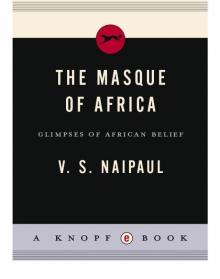 The Masque of Africa: Glimpses of African Belief
The Masque of Africa: Glimpses of African Belief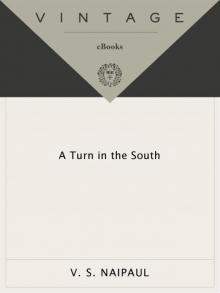 A Turn in the South
A Turn in the South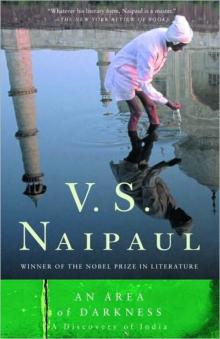 An Area of Darkness
An Area of Darkness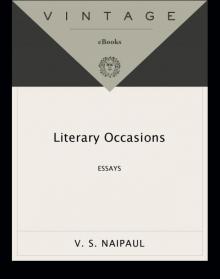 Literary Occasions: Essays
Literary Occasions: Essays A Way in the World
A Way in the World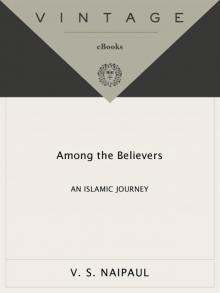 Among the Believers: An Islamic Journey
Among the Believers: An Islamic Journey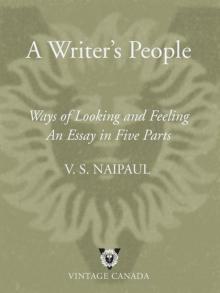 A Writer's People: Ways of Looking and Feeling
A Writer's People: Ways of Looking and Feeling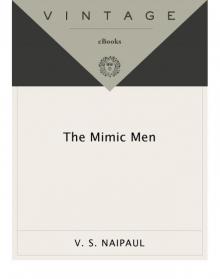 The Mimic Men: A Novel
The Mimic Men: A Novel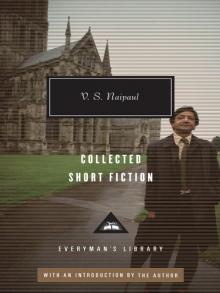 Collected Short Fiction
Collected Short Fiction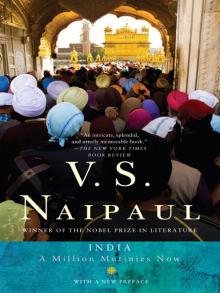 India: A Million Mutinies Now
India: A Million Mutinies Now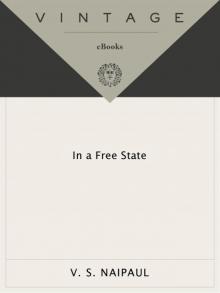 In a Free State
In a Free State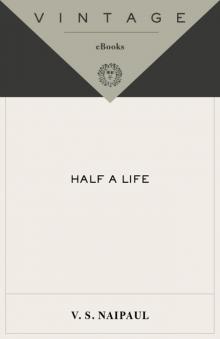 Half a Life
Half a Life Beyond Belief: Islamic Excursions Among the Converted Peoples
Beyond Belief: Islamic Excursions Among the Converted Peoples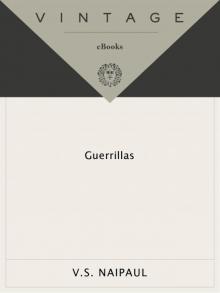 Guerrillas
Guerrillas A House for Mr. Biswas
A House for Mr. Biswas The Writer and the World: Essays
The Writer and the World: Essays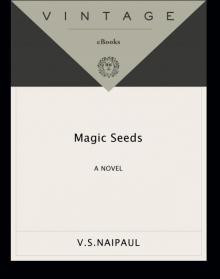 Magic Seeds
Magic Seeds The Mystic Masseur
The Mystic Masseur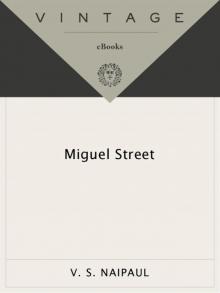 Miguel Street
Miguel Street The Return of Eva Perón, With the Killings in Trinidad
The Return of Eva Perón, With the Killings in Trinidad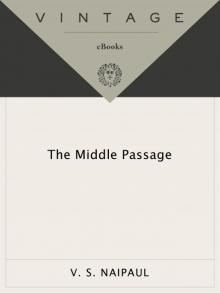 The Middle Passage
The Middle Passage A Bend in the River
A Bend in the River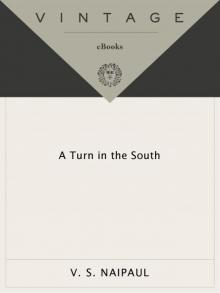 A Turn in the South (Vintage International)
A Turn in the South (Vintage International)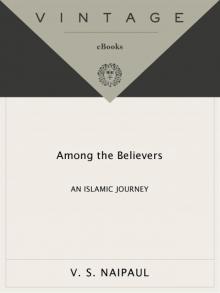 Among the Believers
Among the Believers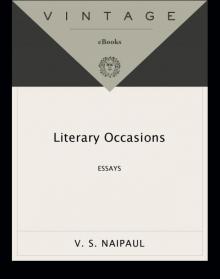 Literary Occasions
Literary Occasions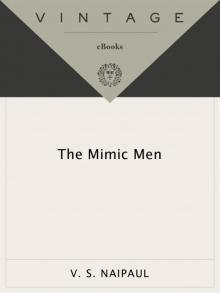 The Mimic Men
The Mimic Men The Writer and the World
The Writer and the World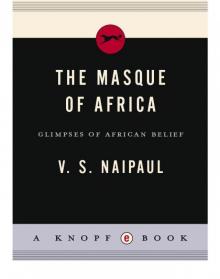 The Masque of Africa
The Masque of Africa